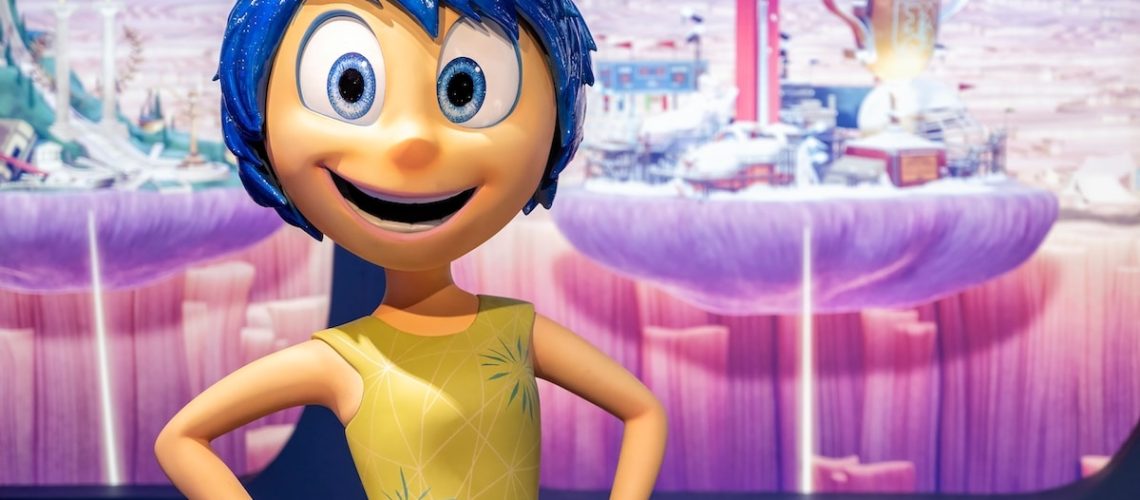Pixar’s Inside Out is a visual and emotional masterpiece, but some sharp-eyed fans have noted what might be a deeper, subtextual exploration of LGBTQ+ themes woven into the film’s narrative. The 2015 animated hit follows the internal emotions of Riley, an 11-year-old girl navigating a major life transition, but is it possible that Pixar dropped subtle hints about her own identity beyond just childhood angst?
No Bears in San Francisco
One eyebrow-raising moment in the film is the scene where Anger, voiced by Lewis Black, exclaims, “I saw a really hairy guy, he looked like a bear!”—a playful reference that doesn’t go unnoticed by those familiar with LGBTQ+ culture, where “bear” is a slang term for large, hairy gay men. Fear, voiced by Bill Hader, responds in confusion, and Disgust, voiced by Mindy Kaling, shuts it down, saying, “There are no bears in San Francisco,” which adds another layer of potential meaning. San Francisco, after all, is a city with deep ties to LGBTQ+ culture. Is this a sly acknowledgment of the LGBTQ+ community, or just a light-hearted joke? Some fans aren’t convinced it’s a coincidence.
Then there’s Riley herself. While Pixar stays well away from overtly discussing sexuality or gender identity in Inside Out, the mix of genders within Riley’s emotions (Joy, Sadness, and Disgust are female, while Fear and Anger are male) raises intriguing questions. Compare this with her parents’ emotions, where her mother’s are all female and her father’s all male. The decision to present Riley’s emotions as a mix could be a subtle nod to the fluidity and complexity of identity, particularly during adolescence, a time when many young people begin to question their feelings and attractions.
Mixed-Gender Representations
Some critics argue that this mixed-gender representation of emotions is Pixar’s way of gently signaling to young viewers that it’s okay to feel different—especially in a world where gender norms and identities are evolving. “While this may seem stereotypical, saying you’re gay because you have mixed-gender voices in your head might be a way to help young gay and lesbian kids understand the differences they feel as they are growing up,” writes Watermark Online, a publication that explores LGBTQ+ themes in popular culture.
Another visual cue some see as an LGBTQ+ nod is the rainbow theme running throughout the movie. Joy and Sadness, on their journey through Riley’s mind, encounter her memories, many of which are represented by vibrant colors. Riley’s imaginary friend, Bing Bong, leaves behind rainbow-colored trails, and she frequently wears a rainbow-striped sweater. Rainbows, of course, are widely recognized as symbols of LGBTQ+ pride, and while the film never directly addresses this, the imagery is there. It might be easy to dismiss this as coincidental, but when viewed alongside other subtle cues, it fuels the idea that Pixar might be quietly nodding to LGBTQ+ issues without breaking Disney’s typically conservative approach to children’s media.
Tip-Toeing Around LGBTQ Themes
However, not everyone is buying it. There are criticisms that Inside Out tiptoes around potential LGBTQ+ themes, rather than addressing them head-on. After all, Disney and Pixar have been cautious about overtly queer representation in their films, often relegating it to subtle subtext or blink-and-you’ll-miss-it moments (think LeFou in Beauty and the Beast). Some argue that Inside Out is another example of this hesitancy. As progressive as the visuals and ideas might seem, the film doesn’t make any clear statements, leaving audiences to fill in the gaps themselves.
This isn’t the first time Pixar has faced such criticism. In Brave (2012), the main character Merida’s rebellious nature and refusal to conform to traditional gender roles led to fan speculation about her possibly being queer, although Pixar never confirmed any such intention. Similarly, Finding Dory (2016) sparked debate over the appearance of what seemed to be a lesbian couple in the background of one scene, though Disney refused to comment.
Safe Space for LGBTQ Youth
One might argue that Pixar’s strategy is to keep things open to interpretation, allowing different audiences to take what they need from the film. Perhaps Inside Out does offer a safe space for LGBTQ+ youth to see themselves represented, if not overtly, then in the nuanced portrayal of identity, emotions, and the way those elements evolve over time. Or maybe it’s all coincidental, and the filmmakers were simply focused on telling a heartfelt story about growing up, with no hidden meanings at all.
Regardless, the film has clearly resonated with audiences from all walks of life. The idea that Riley’s mixed-gender emotions could reflect the internal complexities of LGBTQ+ youth is intriguing, whether intended or not. The subtlety of these themes might actually be their strength. Inside Out doesn’t preach, but it allows space for interpretation—and for some, that’s enough.
21 Ignorant Lies About Americans the Rest of the World Claims Are True

Americans are often the subject of wild assumptions and exaggerated stereotypes. Are these misconceptions affecting how the world views the average American? 21 Ignorant Lies About Americans the Rest of the World Claims Are True
Flawed Gender Tests: Olympic Committee Sends Plea to Boxing Officials

The International Olympic Committee has declared old boxing gender tests as flawed and illegitimate. This has arisen amid discussions regarding gender in Olympic female boxing matches. Flawed Gender Tests: Olympic Committee Sends Plea to Boxing Officials
This article was first published on Pulse of Pride.
Feature photo credit: Shutterstock/ MSCT Pics. The images used are for illustrative purposes only and may not represent the actual people or places mentioned in the article.
For transparency, this content was partly developed with AI assistance and carefully curated by an experienced editor to be informative and ensure accuracy.

